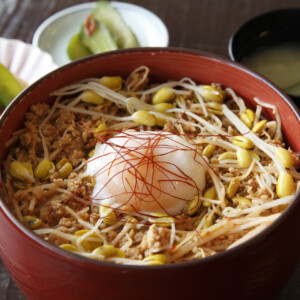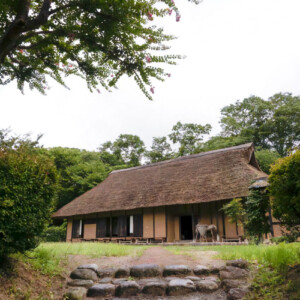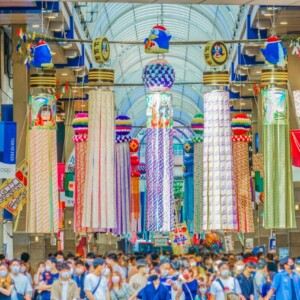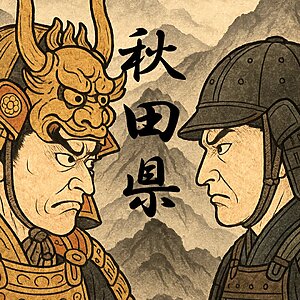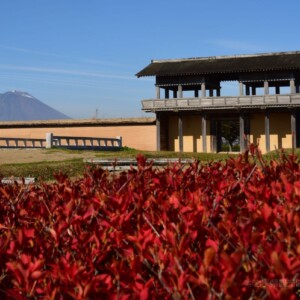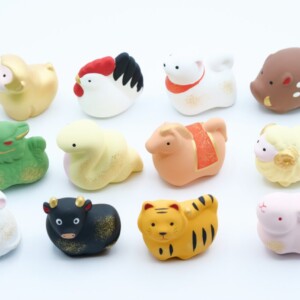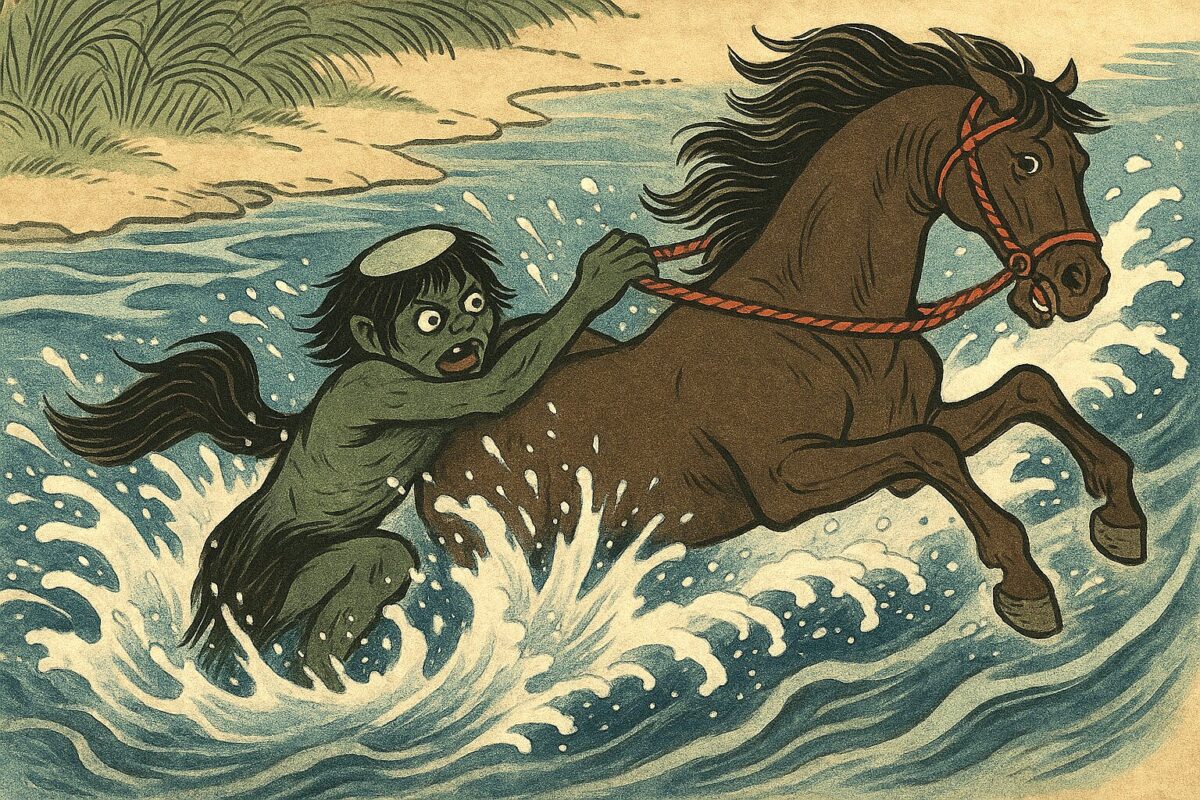
What is the terrifying water demon "Medatsu" that is passed down in Hachinohe? ~A local legend that is different from a kappa~
table of contents
Some areas of Hachinohe City, Aomori Prefecture have been passed down from ancient times to the legend of eerie youkai known as "Medutu" or "Medutu." It is similar to the nationally known "kappa," but its nature is more violent and is said to have a terrifying ability to transform people, and is deeply connected to the region's inherent waterside faith and safety awareness.
In this article, we will introduce in detail the true nature, origin, and even traces that remain in modern times, based on historical documents.
What is Medots? His terrifying appearance and abilities

"Medatsu" is a monster that is passed down mainly in Shirinai Town, Hachinohe City , and is a small, black child with a monkey-like face. It is said that sometimes she appears in the form of a girl. It is a body that is directly linked to water accidents, mainly appearing at riverside and irrigation canals, and is said to drag people into the water and drown them.
It is said that its viciousness surpasses that of a kappa, and there is a legend that it transforms into relatives and friends of a person possessed by Medutz and attacks again.
This legend is similar to the record of Tsugaru Hirosaki Domain, "The Hibiki no Hibiki," and contains a horror story that something had popped out of the anus of a water corpse (※The Hibiki no Hibiki no Hibiki/Hirosaki Library).
Legend of origin related to Sajingoro and Kushibiki Hachimangu Shrine
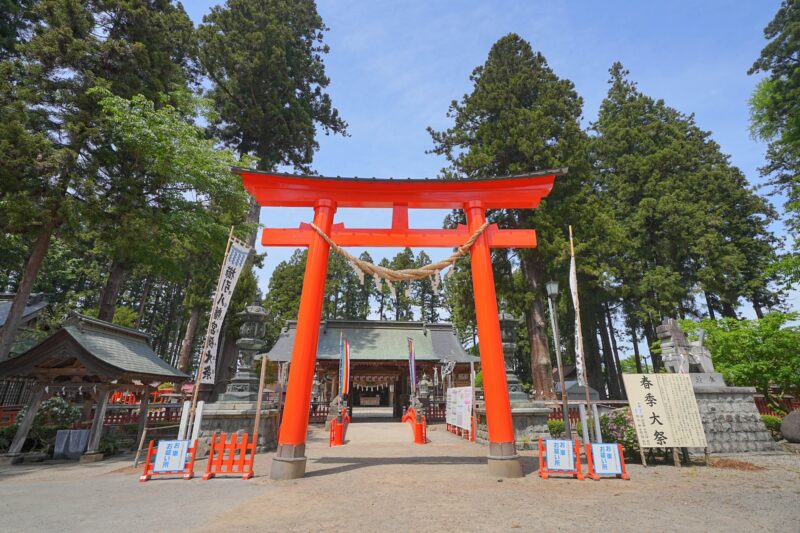
Medatsu also has anecdotes that involve Sajingoro, a sculptor from the Edo period who is well known throughout the country. This story goes back to the construction of Kushibiki Hachimangu Shrine, a famous shrine in Hachinohe City.
When Jingoro threw away wood debris and wood dolls that were no longer needed during the construction process into the river, he was allegedly abusive, saying, "Take it with your butt." Then the wood scraps reside in its soul and transforms into a youkai in the river. That's what became "Medots."
Furthermore, it is said that in prayer from the villagers, Hachiman-sama sent a godly angel, and thrust the head of Medatsu, which caused his head to dent. This bald head is also depicted in the sculpture described below, and is said to have been allowed to attack people and horses only between July 1st and 16th of the lunar calendar.
Part of this tradition is also expressed in the sculpture at the main shrine of Kushibiki Hachiman Shrine, and we can still see the image of Medatsu, which is held back by a hawk
"Medutz is coming out" - Lessons left on the sign

This legend is more than just a folk tale, but around 1976 (Showa 51), a sign was installed with the words "Medutz coming out" written in the local area to prevent accidents that would cause a fall into the irrigation canal.
The sign reads a warning message in red, "Don't get close, don't get close, there's a Meditus," indicating that while still humorous, the intention was to prevent children from becoming drowned.
This sign was later donated to the Hachinohe City Museum after its service was completed, and was also displayed at the special exhibition "Kappa Exhibition" in 2016, and is still cherished as a part of the local culture today (*Hatsunohe City Museum's collection and exhibition record).
The weight of "evidence" and the tradition that remains in place names
Medatsugawara " still remains in part of Shirinaicho, Hachinohe City
There is also a theory that the roots of Tono's kappa and zashiki waraku were actually the "Medatsu" of Hachinohe, making it a great example of the spread and transformation of the youkai culture. This is an extremely valuable local folk material when considering the connectivity of monster legends in the Tohoku region.
Google Map – Medatsugawara
Summary: What is the lesson Medots speaks to?
"Medatsu" is more than just a monster story. It can be said to be the crystallization of "local wisdom" created by the prevention of water accidents, safety awareness, and the fear and imagination of people.
It may seem eccentric to modern eyes, but it is packed with realistic ingenuity to convey the dangers of the water to children. As it becomes a sign and is passed down to the present day, Medatsu still lives on as a local cultural heritage.
If you've ever visited Hachinohe, why not try and take a look at Kushibiki Hachiman Shrine and the museum and trace the scenes of this mysterious youkai?



![[Aizu Tajima Gion Festival Photo Report: Part 1] Kabuki Kabuki performances at the Great Hoods of the Night Festival [Minami Aizu Town, Fukushima Prefecture] 2025.07.22 Aizu Tajima Gion Festival_00](https://jp.neft.asia/wp-content/uploads/2025/07/PXL_20250722_105121018-150x150.jpg)
![[Aizu Tajima Gion Festival Photo Report: Part 2] Seven-lined procession, also known as Japan's number one bride procession [Minami Aizu Town, Fukushima Prefecture] 2025.07.22 Aizu Tajima Gion Festival_Japan's No. 1 Bride Procession](https://jp.neft.asia/wp-content/uploads/2025/07/IMG_38592-150x150.jpg)
![[Yamagata Prefecture] 3 famous waters in Yamagata Prefecture! Yamagata Prefecture is home to blessed water created by snow, mountains, and forests. Yamagata Falls](https://jp.neft.asia/wp-content/uploads/2023/02/9b639100f52e30365f8499a2f4657724-150x150.jpg)
![It's so big that the main castle is hazy and you can't see! Yamagata Castle, known as Kasumi Castle [Yamagata Prefecture] Yamagata Castle's main castle, Ichimonji gate](https://jp.neft.asia/wp-content/uploads/2023/08/3261071_m-150x150.jpg)
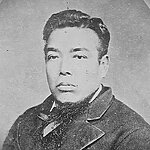
![It's not just Akita dogs! "Akita Three Chickens" is a natural monument in Odate City [Akita Prefecture] 2021730f7ae30aabb98a41d487a660ed-1](https://jp.neft.asia/wp-content/uploads/2024/02/2021730f7ae30aabb98a41d487a660ed-1-150x150.jpg)
![The legend of the pyramid that lies in Kakunodate City is called Cromanta! [Akita Prefecture] IMG_0530](https://jp.neft.asia/wp-content/uploads/2024/03/IMG_0530-150x150.jpg)

